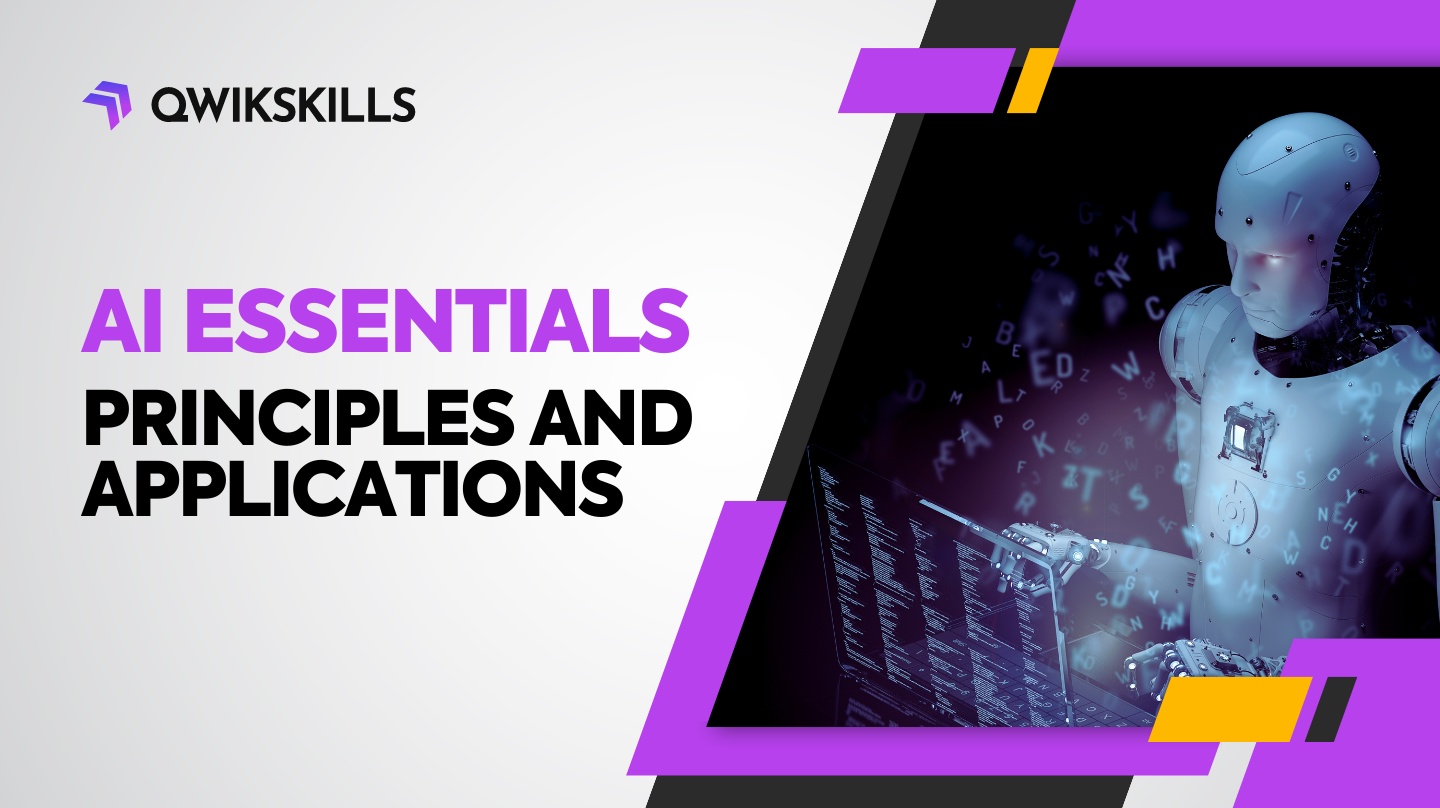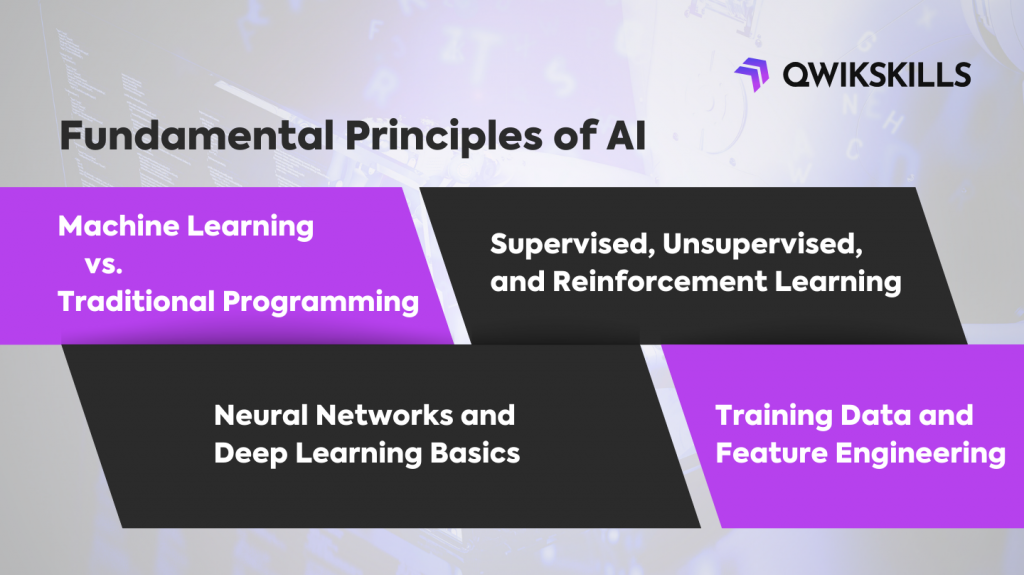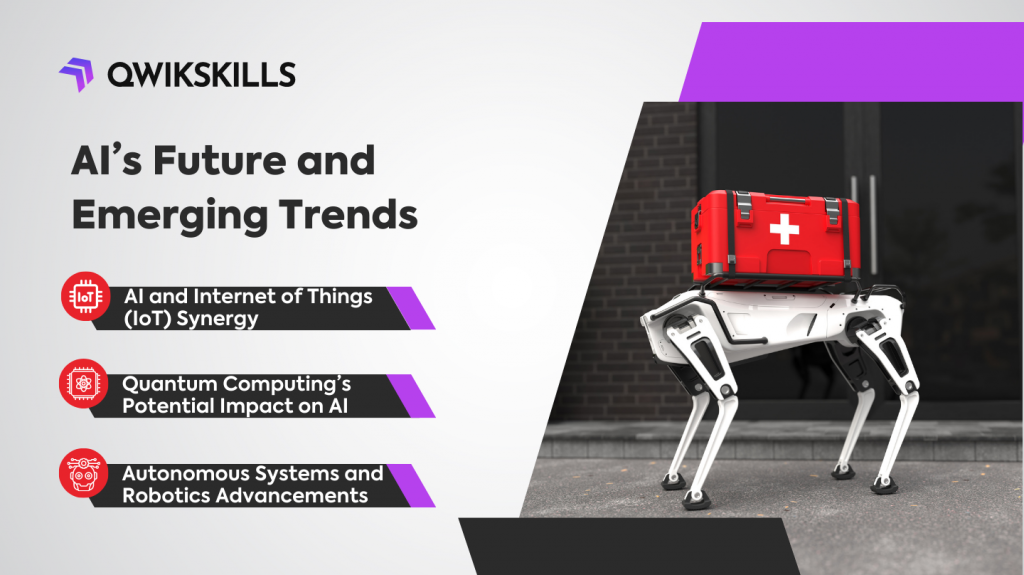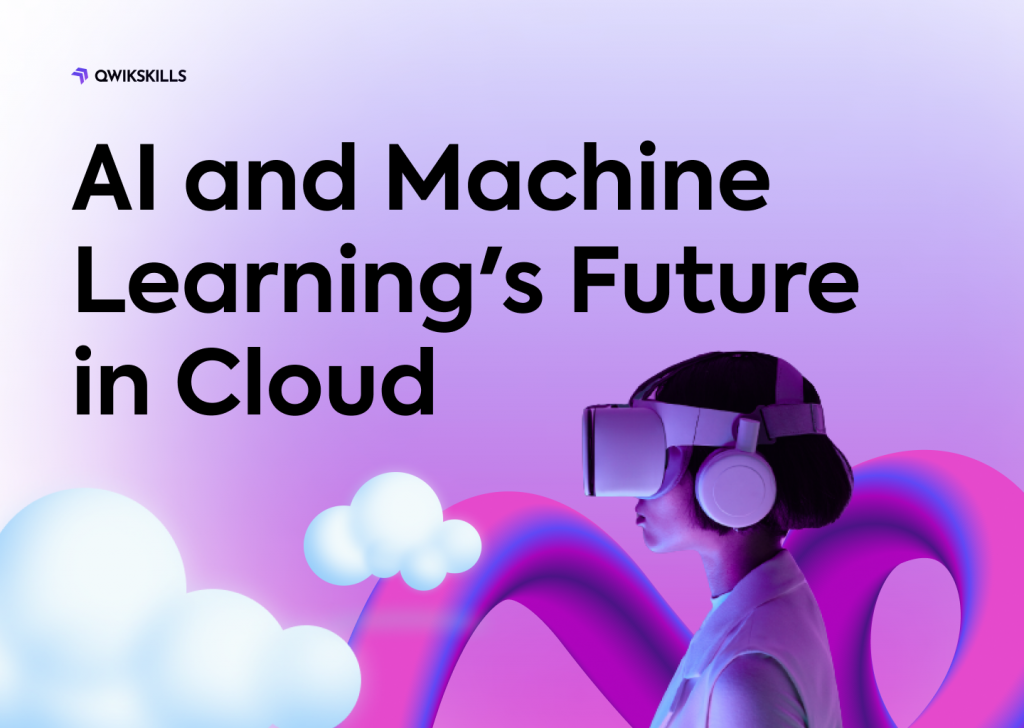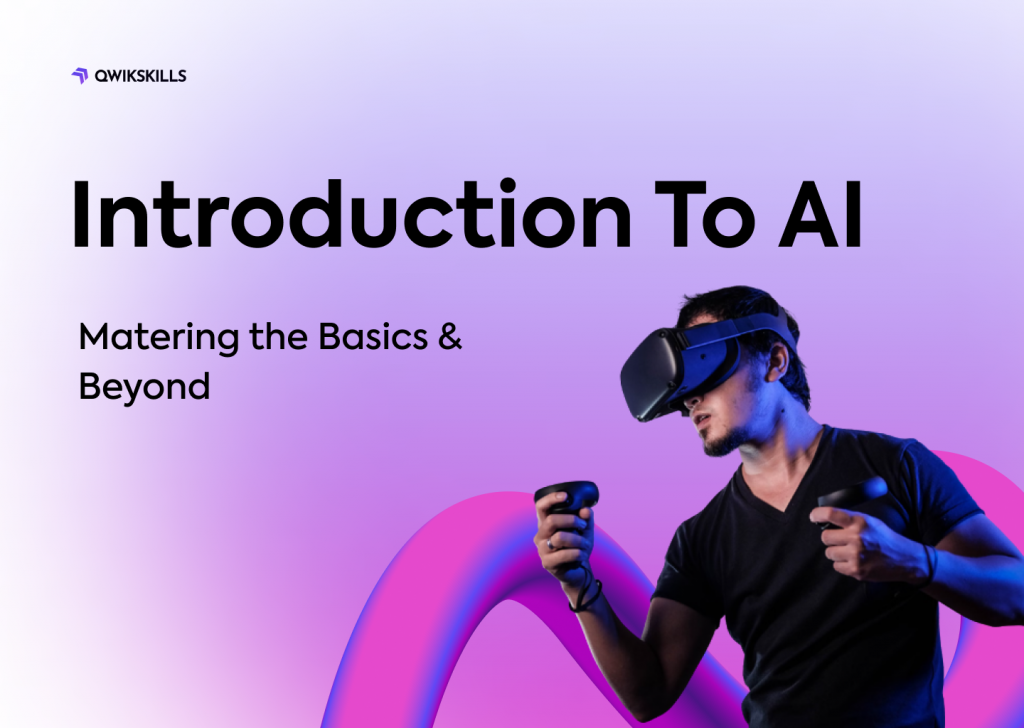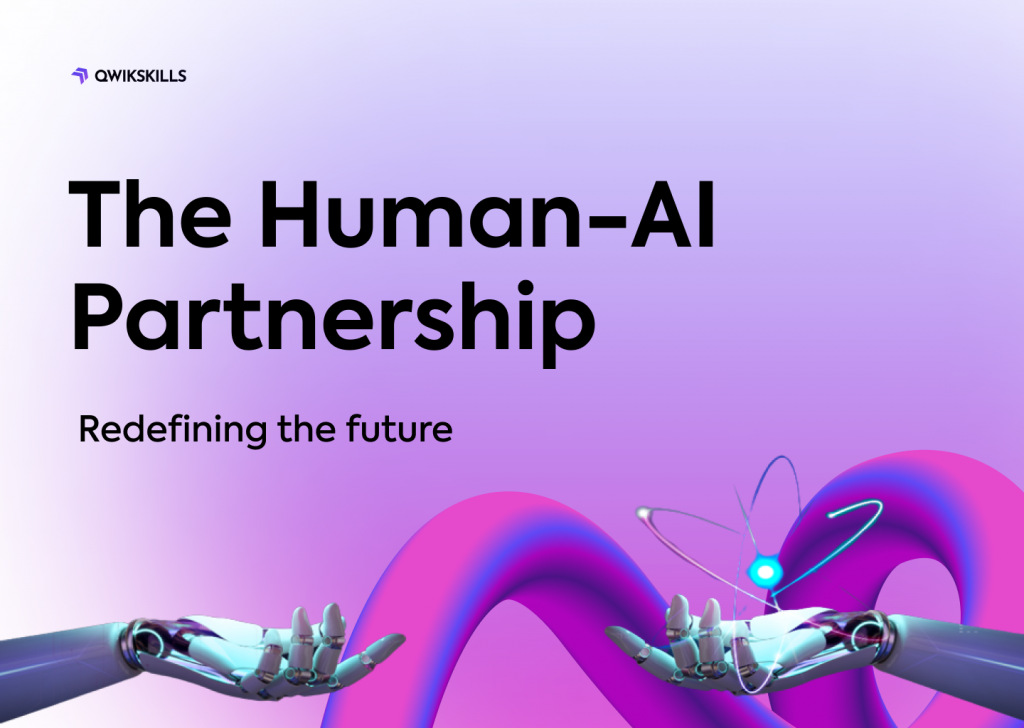Artificial Intelligence (AI) has transformed from a distant concept into an integral part of our daily lives. This article delves into the heart of AI, breaking down its principles, applications, ethical considerations, and future trends. Ready to dive into the world of AI? Unlock its potential with QwikSkills. Learn AI Essentials 101, applications, and ethics from industry experts. Embrace innovation and shape the future
Introduction to AI Essentials
In a world where innovation knows no bounds, AI emerges as a technological marvel. It’s more than just robots and sci-fi scenarios; AI is the driving force behind automation, optimization, and new possibilities. Defining AI succinctly is like capturing lightning in a bottle—it’s the creation of machines that mimic human intelligence, enabling them to learn, reason, and make decisions.
Defining AI and Its Importance
AI’s journey from an idea to a reality has been awe-inspiring. Imagine machines not only performing tasks but adapting based on experience. This evolution isn’t a matter of chance; it’s about enhancing efficiency, accuracy, and ultimately, our quality of life.
Evolution of AI: From Concept to Reality
The road to AI’s realization is paved with ingenuity. We’ve gone from theories in the 20th century to practical applications today. The rapid progression stems from combining massive data availability, computational power, and advanced algorithms.
AI’s Role in Shaping Modern Industries
AI isn’t confined to laboratories—it’s steering sectors like healthcare, finance, and transportation. It optimizes processes, empowers decision-making, and opens doors to innovation, changing how industries operate.
Fundamental Principles of AI
The core of AI lies in principles that make it tick. We’ll explore how it learns, evolves, and adapts.
Machine Learning vs. Traditional Programming
Traditional programming is like providing explicit instructions, while machine learning allows systems to learn patterns and make predictions from data. It’s akin to teaching a child to ride a bike by showing them rather than scripting the process.
Supervised, Unsupervised, and Reinforcement Learning
Supervised learning is teaching with labeled examples, unsupervised learning is letting the system discover patterns on its own, and reinforcement learning involves rewarding the system for correct actions. It’s like coaching an athlete—guided practice, self-discovery, and trial-and-error learning.
Neural Networks and Deep Learning Basics
Neural networks mirror human brain activity, and deep learning is about stacking these networks for advanced tasks. Think of a neural network as interconnected neurons, each processing information, and deep learning as a skyscraper of these networks—each layer refining understanding.
Training Data and Feature Engineering
AI’s prowess arises from the quality of data it’s trained on. It’s akin to a chef crafting a masterpiece—each ingredient (feature) meticulously chosen, and the training process is the recipe that brings it all together.
Key Components of AI Systems
The nuts and bolts of AI systems encompass various stages, from collecting data to evaluating models.
Data Collection and Preprocessing
Data is the bedrock. Imagine building a house—it starts with a solid foundation. Data collection is akin to gathering materials, and preprocessing is like refining those materials to ensure they’re fit for construction.
Feature Selection and Extraction
Features are the essence of AI. They’re like the tools a painter chooses to craft a masterpiece. Selecting relevant features is vital, and sometimes, creating new ones from existing data can unlock hidden insights.
Model Architecture and Selection
Choosing a model is akin to selecting a blueprint for a building. Each model has strengths—some for images, some for text. It’s like picking a brush that suits the canvas and the art you want to create.
Evaluation Metrics for AI Models
Evaluating a model is like assessing a student’s performance. Accuracy, precision, and recall are your report card. Just as you wouldn’t judge a student’s knowledge from a single test, you use multiple metrics to gauge a model’s effectiveness.
Applications of AI in the Real World
AI isn’t confined to labs; it’s enhancing real-world experiences across domains.
Natural Language Processing (NLP) for Communication
NLP is like a universal translator. It enables machines to comprehend and generate human language, opening avenues for chatbots, language translation, and sentiment analysis.
Computer Vision for Visual Recognition
Computer vision equips machines with sight. It’s like giving them eyes that can analyze images and videos, enabling facial recognition, autonomous vehicles, and quality control in manufacturing.
AI in Healthcare: Diagnostics and Treatment
AI’s impact on healthcare is akin to a medical breakthrough. It aids diagnosis by identifying patterns in medical images and suggests personalized treatments, enhancing patient care.
AI-Driven Business Intelligence and Analytics
AI transforms data into actionable insights, much like converting raw materials into refined products. It’s like having a business consultant with a sixth sense for trends and opportunities.
Ethical Considerations in AI
With great power comes great responsibility. Ethical considerations are vital to AI’s evolution.
Bias and Fairness in AI Algorithms
Algorithms can unintentionally inherit biases from the data they learn from. It’s like a child inheriting beliefs from their environment. Ensuring fairness is vital, much like teaching empathy.
Privacy Concerns and Data Security
AI’s hunger for data raises privacy concerns. It’s like guarding precious artifacts—data should be protected, and individuals’ rights respected.
Transparency and Exploitability of AI Decisions
Imagine AI as a black box. Understanding its decisions is like deciphering a magician’s trick. Transparency is like revealing the trick—making the process understandable and accountable.
AI’s Future and Emerging Trends
The journey has just begun. AI’s future is filled with exciting prospects.
AI and Internet of Things (IoT) Synergy
AI and IoT are like dance partners. IoT provides data, and AI transforms it into meaningful insights. Together, they orchestrate a harmonious performance.
Quantum Computing’s Potential Impact on AI
Quantum computing’s potential impact on AI is akin to giving AI a jetpack. It could revolutionize complex calculations, making AI more potent and transformative.
Autonomous Systems and Robotics Advancements
Autonomous systems and robotics are AI’s physical embodiment. They’re like AI’s avatars, performing tasks in the physical world—think self-driving cars and advanced robotics in manufacturing.
Implementing AI in Your Projects
Bringing AI to your projects requires thoughtful planning.
Identifying Suitable AI Use Cases
Choosing AI use cases is like picking the right tool for a task. AI excels in tasks requiring pattern recognition, prediction, and optimization.
Building a Collaborative AI Development Team
AI development is a team effort. It’s like assembling a band with diverse skills—data scientists, programmers, and domain experts—to create a harmonious symphony.
Resources for Learning and Implementation
Learning AI is like acquiring a new language. Numerous online courses, tutorials, and communities act as guides in this journey of exploration and mastery.
Semantically Similar FAQs
- What are the core concepts of AI Essentials? AI’s core concepts encompass machine learning, neural networks, data processing, and intelligent decision-making.
- How does machine learning differ from traditional programming? Machine learning enables systems to learn from data, while traditional programming involves explicit coding of instructions.
- What are neural networks and their significance in AI? Neural networks mimic the brain’s structure and are fundamental to deep learning, enabling complex pattern recognition.
- Can you provide examples of AI applications in different industries? AI’s applications span healthcare diagnostics, business analytics, autonomous vehicles, and more.
- What ethical challenges should be considered when developing AI systems? Ethical challenges include biases in algorithms, data privacy concerns, and ensuring transparent decision-making.
- How might quantum computing influence the future of AI Essentials? Quantum computing could significantly accelerate AI’s capabilities, solving complex problems faster.
- What steps can businesses take to integrate AI into their operations? Businesses should identify suitable AI use cases, build collaborative teams, and leverage resources for learning and implementation.
As we embark on this AI-powered journey, remember—AI is a tool, and its impact lies in the hands of those who wield it. Embrace the power responsibly and shape a future where AI and humanity thrive in harmony.
Conclusion: Embracing the Power of AI Essentials
In closing, AI isn’t a distant concept; it’s here, transforming industries and enhancing lives. As we venture into an AI-powered future, understanding its principles, applications, ethics, and potential is key to harnessing its true potential.
Ready to explore the boundless realm of AI Essentials? Uncover its principles, applications, and ethics with us at QwikSkills. Elevate your understanding and expertise in this transformative field. Join us today to unlock a future powered by AI innovation!

